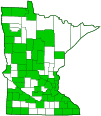prairie buttercup
(Ranunculus rhomboideus)
Conservation • Description • Habitat • Ecology • Use • Distribution • Taxonomy
Conservation Status |
|
|||||||
| IUCN Red List | not listed |
|||||||
| NatureServe | NNR - Unranked SNR - Unranked |
|||||||
| Minnesota | not listed |
|||||||
Description |
||
Prairie buttercup is a early-flowering, low-growing, prairie wildflower. It is one of the first prairie wildflowers to bloom in the spring. It occurs in the United States in the Upper Midwest from Michigan to North and South Dakota, with scattered occurrences in the west, and in southern Canada from Ontario to Alberta, with a few occurrences in British Columbia. It is common in Minnesota. It is found mostly in prairies, occasionally in open woods or thickets. It grows in sandy soil under full or partial sun. Prairie buttercup is a 2″ to 8⅝″ (5 to 22 cm.) tall, erect, perennial forb that rises on multiple stems from slender roots. The stems are erect and are covered with long spreading hairs. Basal leaves are undivided, egg-shaped oblong or broadly egg-shaped, ⅜″ to 2⅜″ (1 to 5 cm) long, and ⅜″ to 1 7⁄16″ (0.9 to 3.6 cm) wide. They are on long stalks. The blades are broadly angled at the base and rounded at the tip. The upper and lower surfaces are covered with long soft hairs. The margins have 5 rounded teeth on each side but are untoothed near the base. Rarely the innermost basal leaves are 3-parted. Stem leaves are alternate and stalkless. They are deeply divided into a 3 to 5 one-inch long segments that are long, narrow, and straight sided (linear). The inflorescence is single flowers rising from a few to several upper leaf axils. Each flower is on a stalk (pedicel) that is covered with long, spreading hairs. The flowers are ⅜″ to ⅝″ wide. There are usually 5 outer floral leaves (sepals), 5 petals, and always numerous stamens. The sepals are light green, ⅛″ to ¼″ (4 to 6 mm) long, and 1⁄16″ to ⅛″ (1.5 to 3 mm) wide. The outer (lower) sepal surface is covered with long, spreading, colorless hairs. The petals are yellow, shiny, oblong to elliptical, ¼″ to 5⁄16″ (6 to 8 mm) long, and 1⁄16″ to ⅛″ (2 to 4 mm) wide. They are much longer than the sepals. Sometimes there are up to 8 petals. The stamens have yellow stalks (filaments) and yellow anthers. At the center of the flower there is a dense cluster of green pistils. Each pistil has a single tiny style. The fruit is a dry seed capsule (achene) replacing each pistil. As the achenes begin to develop, the petals and sepals fall to the ground, leaving a depressed globe-shaped, ⅛″ to ¼″ (4 to 6 mm) long, 3 ⁄16″ to ¼″ (5 to 7 mm) in diameter seed head. Each achene is shaped like a thickened lentil, 1⁄16″ (1.8 to 2.2 mm) long and 1⁄32″ to 1⁄16″ (1.2 to 1.8 mm) wide, with a slender, curved extension (beak) at the end. |
||
Height |
||
2″ to 8⅝″ (5 to 22 cm.) |
||
Flower Color |
||
Yellow |
||
Similar Species |
||
Habitat |
||
Dry. Open woods and prairies. Full to partial sun. Sandy soil. |
||
Ecology |
||
Flowering |
||
April to May |
||
Pests and Diseases |
||
|
||
Use |
||
|
||
Distribution |
||||
|
Sources Biodiversity occurrence data published by: Minnesota Biodiversity Atlas (accessed through the Minnesota Biodiversity Atlas Portal, bellatlas.umn.edu, 5/28/2022). |
|||
| 5/28/2022 | ||||
Nativity |
||||
Native |
||||
Occurrence |
||||
Common |
||||
Taxonomy |
|||
| Kingdom | Plantae (Plants) | ||
| Subkingdom | Pteridobiotina | ||
| Phylum | Tracheophyta (Vascular Plants) | ||
| Class | Magnoliopsida (Dicots) | ||
Order |
Ranunculales (Buttercups, Poppies, and Allies) | ||
Family |
Ranunculaceae (Buttercup) | ||
| Subfamily | Ranunculoideae (Anemones, Buttercups, Larkspurs, and Allies) | ||
| Tribe | Ranunculeae | ||
Genus |
Ranunculus (Buttercups) | ||
Subordinate Taxa |
|||
|
|||
Synonyms |
|||
Ranunculus ovalis |
|||
Common Names |
|||
Labrador buttercup prairie buttercup prairie crowfoot |
|||
Glossary
Achene
A dry, one-chambered, single-seeded seed capsule, formed from a single carpel, with the seed attached to the membranous outer layer (wall) only by the seed stalk; the wall, formed entirely from the wall of the superior ovary, does not split open at maturity, but relies on decay or predation to release the contents.
Axil
The upper angle where a branch, stem, leaf stalk, or vein diverges.
Beak
In plants: A comparatively short and stout, narrow or prolonged tip on a thickened organ, as on some fruits and seeds. In insects: The protruding, tubular mouthpart of a sucking insect.
Elliptic
Narrowly oval, broadest at the middle, narrower at both ends, with the ends being equal.
Filament
On plants: The thread-like stalk of a stamen which supports the anther. On Lepidoptera: One of a pair of long, thin, fleshy extensions extending from the thorax, and sometimes also from the abdomen, of a caterpillar.
Linear
Long, straight, and narrow, with more or less parallel sides, like a blade of grass.
Oblong
Two to four times longer than wide with nearly parallel sides.
Pedicel
On plants: the stalk of a single flower in a cluster of flowers. On insects: the second segment of the antennae. On Hymenoptera and Araneae: the narrow stalk connecting the thorax to the abdomen: the preferred term is petiole.
Sepal
An outer floral leaf, usually green but sometimes colored, at the base of a flower.
Visitor Photos |
|||||
Share your photo of this plant. |
|||||
| This button not working for you? Simply email us at info@MinnesotaSeasons.com. Attach one or more photos and, if you like, a caption. |
|||||
Nancy Falkum |
|||||
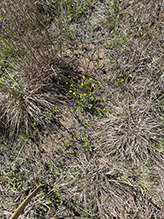 |
|||||
MinnesotaSeasons.com Photos |
|||||
Plant |
|||||
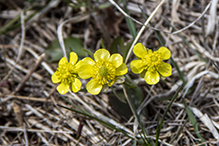 |
|||||
Inflorescence |
|||||
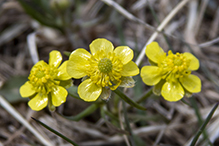 |
|||||
Basal leaves |
|||||
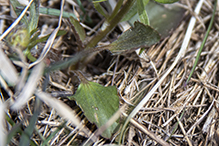 |
|||||

Slideshows |
||

Visitor Videos |
|||
Share your video of this plant. |
|||
| This button not working for you? Simply email us at info@MinnesotaSeasons.com. Attach a video, a YouTube link, or a cloud storage link. |
|||
Other Videos |
|||

Created: 5/25/2020
Last Updated:
